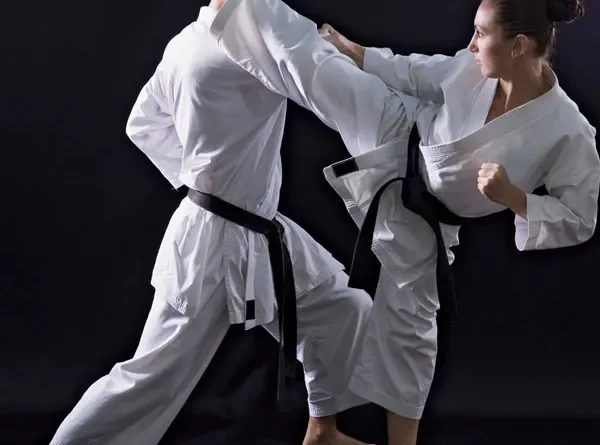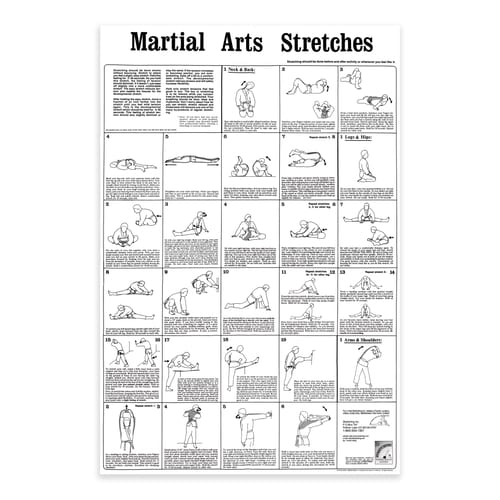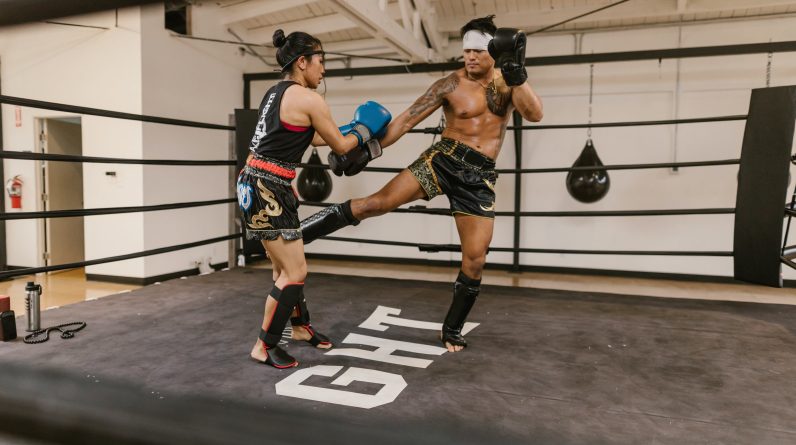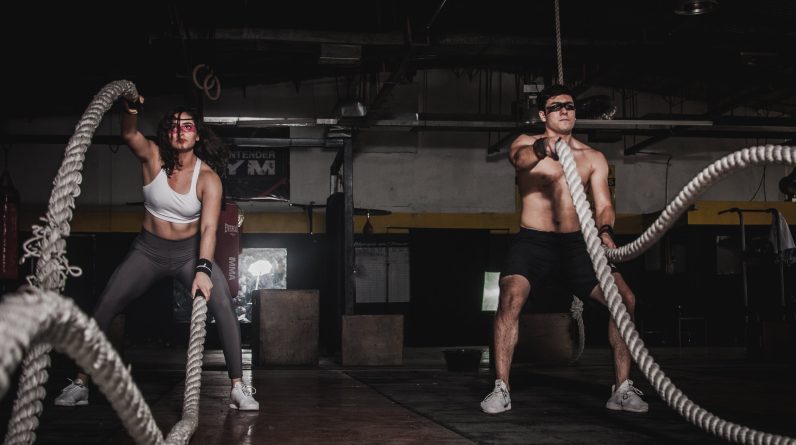
Unleashing the Power Within: The World of Martial Arts
Martial arts, an ancient discipline that encompasses a diverse range of combat techniques and philosophies, has captivated and inspired people for centuries. Originating from different parts of the world, martial arts represent not only a form of self-defense but also a path to personal growth, mental clarity, and physical well-being. In this article, we will explore the fascinating world of martial arts, delving into its rich history, diverse styles, and the numerous benefits it offers to practitioners.
The Definition of Martial Arts
Martial arts refer to various systems and traditions of combat and self-defense practices. The term “martial arts” is derived from the Latin word “martialis,” which means “of Mars,” the Roman god of war. These practices encompass a wide range of techniques, philosophies, and physical training methods, and they are found in cultures around the world.
While different martial arts styles may vary in their techniques and origins, they typically share common goals, including self-defense, physical fitness, mental discipline, and personal development. Martial arts can be practiced for various reasons, such as competitive sport, physical fitness, self-defense skills, cultural preservation, and spiritual growth.
The techniques employed in martial arts can include striking, kicking, grappling, throwing, joint locks, and weapon-based combat. Some martial arts styles emphasize striking techniques, such as punches and kicks, while others focus more on grappling techniques, like throws and submission holds. Many martial arts also incorporate training methods to improve strength, flexibility, agility, speed, and endurance.
Beyond physical techniques, martial arts often encompass mental and philosophical aspects. These may include concepts like discipline, respect, focus, perseverance, humility, and self-control. Many martial arts traditions have a code of ethics or moral principles that practitioners are expected to uphold both inside and outside the training environment.
The History of Martial Arts
The roots of Martial Arts can be traced back to ancient Asia, where different systems were developed for self-defence, hunting, and physical conditioning. Some of the most popular martial arts styles include Kung Fu, Karate, Judo, Taekwondo, and Muay Thai, each with its unique techniques, philosophies, and cultural heritage.
| Kung Fu | China |
| Karate | Japan |
| Judo | Japan |
| Taekwondo | Korea |
| Muay Thai | Thailand |
The Types of Martial Arts
Kick-Based Styles
- Taekwondo
- Kung Fu
- Capoeira
Punch-Based Styles
- Boxing
- Karate
- Krav Maga
Throw-Based Styles
- Judo
- Aikido
- Jujutsu
Interesting Facts About Martial Arts
Origins in Ancient Times:
Martial arts have been practiced for thousands of years, with some styles tracing their roots back to ancient civilizations like China, India, Greece, and Egypt.
Diversity of Styles:
There are hundreds of different martial arts styles and systems practiced worldwide, each with its own unique techniques, philosophies, and cultural influences.
Belt Ranking System:
The belt ranking system, commonly associated with martial arts, originated in the 19th century with Judo founder Jigoro Kano. The system uses colored belts to indicate a practitioner’s level of skill and progression.
Olympic Recognition:
Several martial arts are recognized as Olympic sports, including judo, taekwondo, karate, and boxing. The inclusion of martial arts in the Olympics has contributed to their global popularity and exposure.
Bruce Lee’s Influence:
Bruce Lee, a martial artist and actor, is widely regarded as one of the most influential figures in martial arts history. His philosophy of “Jeet Kune Do” and his contributions to popularizing martial art in films had a significant impact on the development of the martial art world.
Mind-Body Connection:
Many martial art emphasize the cultivation of mental and spiritual aspects alongside physical training. Practitioners often seek to develop qualities such as focus, discipline, self-control, and inner peace.
Cultural Preservation:
Martial art often serve as a means of preserving cultural heritage. Traditional styles, such as kung fu in China or Capoeira in Brazil, are deeply rooted in their respective cultures and have been passed down through generations.
Women in Martial Arts:
Martial art are not exclusive to men. Many women have made significant contributions to martial art and have excelled in various styles. Female martial artists have overcome barriers and stereotypes to compete at the highest levels.
Self-Defense and Empowerment:
Martial art training can empower individuals by teaching practical self-defense techniques and improving confidence. It equips practitioners with the skills and mindset to protect themselves and others if necessary.
Health and Fitness Benefits:
Regular practice of martial arts offers numerous health benefits, including improved cardiovascular fitness, strength, flexibility, balance, coordination, and overall physical well-being.
Philosophical Influences: Many martial art styles incorporate philosophical teachings, such as Zen Buddhism in Japanese martial art or Taoism in Chinese martial art. These teachings often emphasize harmony, balance, and the integration of mind, body, and spirit.
Cultural Exchange and Globalization:
Martial art have become popular worldwide, leading to cultural exchange and the integration of techniques and philosophies from different styles and countries.
These are just a few fascinating facts about martial art, showcasing their rich history, diverse styles, and impact on individuals and cultures around the world.
The Pros of Practicing Martial Arts
Practicing martial art offers many benefits, spanning from physical fitness to mental wellbeing. It can help improve your flexibility, balance, and coordination while also reducing stress, anxiety, and depression. Additionally, studying martial art can foster self-discipline, respect, and focus which can help you to succeed in other areas of life.

Improved Flexibility

Mental Wellbeing

Self-Defense Skills
The Cons of Practicing Martial Arts
While martial arts have numerous benefits, there are also some potential drawbacks or challenges associated with practicing them. Here are some cons to consider:
Risk of Injury:
Martial art involve physical contact and can be physically demanding. There is a risk of injuries, such as sprains, strains, fractures, and bruises, particularly during sparring or competitive matches. Proper safety precautions and training under qualified instructors can help mitigate these risks.
High Intensity and Physical Demands:
Martial art training can be physically demanding, requiring stamina, strength, and flexibility. It may not be suitable for everyone, especially individuals with pre-existing health conditions or physical limitations. Beginners may need to gradually build up their fitness levels to avoid overexertion.
Time Commitment:
Martial art training often requires a significant time commitment to see progress and achieve proficiency. Regular practice, attending classes, and learning and mastering techniques can consume a considerable amount of time, which may not be feasible for individuals with busy schedules or other commitments.
Financial Costs:
Martial art training typically involves fees for classes, equipment, uniforms, and potentially additional costs for grading exams or competitions. These expenses can vary depending on the style, location, and level of involvement. Financial considerations may limit access for some individuals.
Competitive Pressure:
While competition can be a motivating factor for some practitioners, it can also create a stressful environment. The pressure to perform well and the focus on winning can lead to increased stress levels and anxiety, particularly in competitive martial art styles.
Potential for Misuse:
Although martial art are primarily intended for self-defense and personal development, there is a risk of individuals misusing their skills. Martial art techniques should be used responsibly and ethically, and practitioners should understand the importance of self-control and respect.
Limited Applicability in Real-Life Situations:
While martial art training provides valuable self-defense skills, it’s important to recognize that real-life situations can be unpredictable and different from controlled training environments. Adaptation and additional self-defense training may be necessary to handle specific real-world scenarios.
Emphasis on Physicality:
Some martial art styles may place a strong emphasis on physical attributes, such as strength or agility. This focus may not appeal to everyone, as individuals with different body types or physical abilities may feel disadvantaged or discouraged.
Potential for Burnout:
Intense training schedules, repetitive drills, and the pressure to progress can lead to burnout or loss of interest over time. It’s important to maintain a balance, listen to one’s body, and incorporate rest and recovery periods to avoid physical or mental exhaustion.
Instructor Quality and Style Compatibility:
The quality and expertise of martial art instructors can vary. It’s important to find a qualified and experienced instructor who aligns with your goals, teaching style preferences, and values. Compatibility between the instructor’s teaching methods and your learning style is crucial for a positive training experience.
Martial Art is an ancient practice that has evolved over time and now encompasses a wide range of disciplines. While there are pros and cons to practicing , it’s a worthwhile pursuit for anyone seeking to strengthen both their mind and body. As with any physical endeavor, it’s important to approach martial art with respect and proper guidance to reap the benefits while minimizing the risks.






